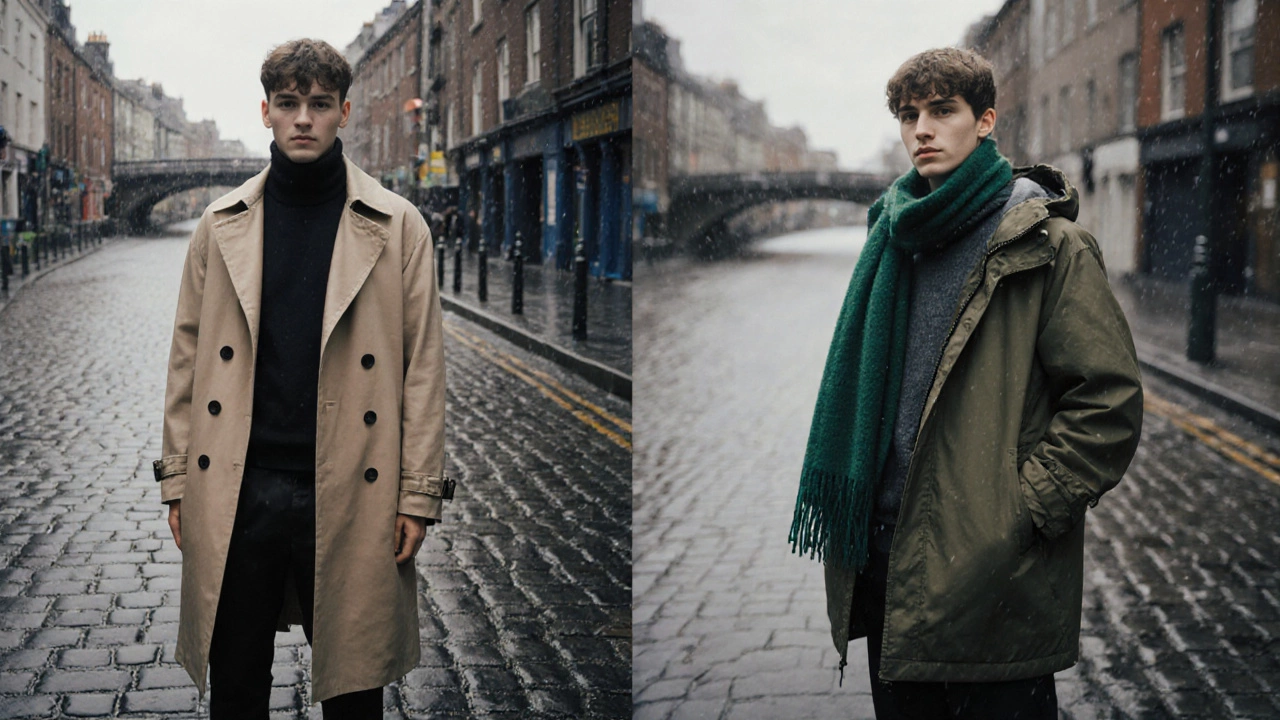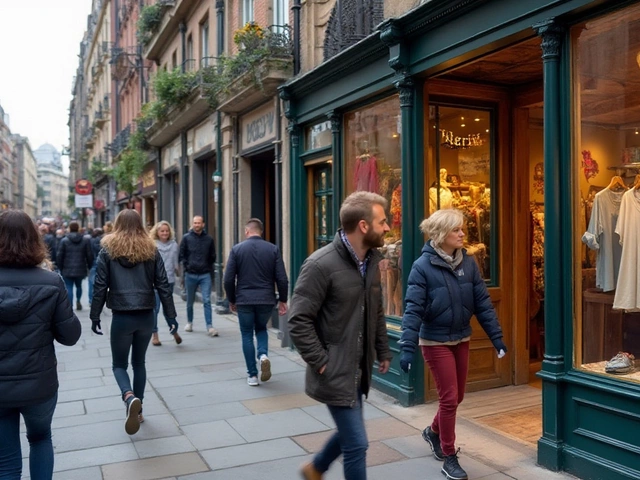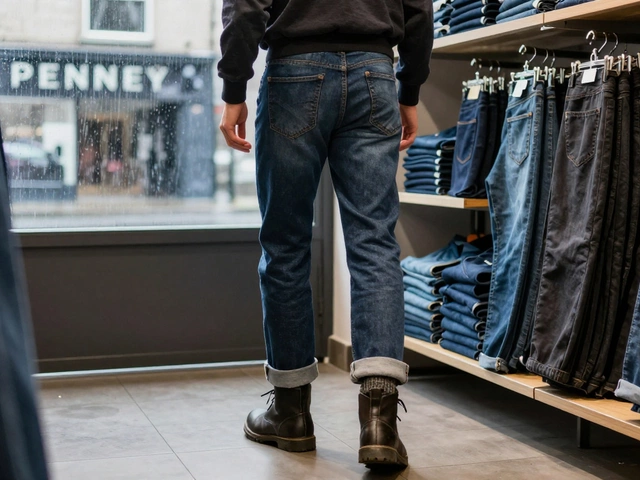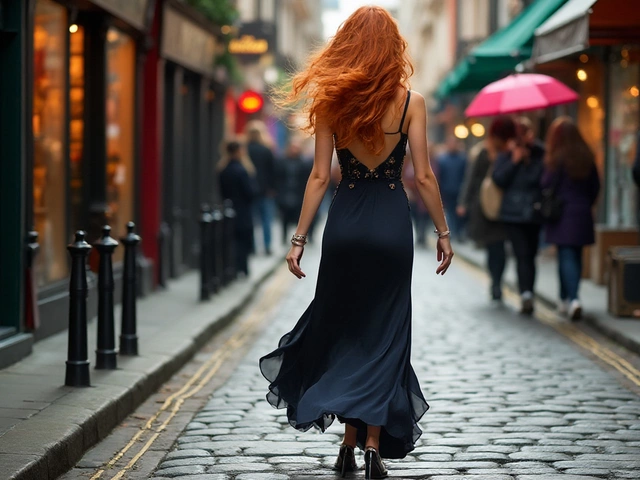When the Irish rain starts drizzling in Dublin or the wind picks up over the Wicklow Mountains, you reach for a coat. But should that coat hug your body or hang loosely? The answer isn’t one‑size‑fits‑all - it depends on climate, activity, and the look you want on the streets of Cork or the festival grounds in Galway. Below we break down the pros and cons of tight and loose coats, give you local buying tips, and help you nail the perfect coat fit for Ireland’s ever‑changing weather.
Understanding the Irish Climate and Why It Matters
Irish Weather is famously unpredictable, with rainy days in March, chilly breezes in December, and occasional sunshine that can turn into a downpour in minutes. The average temperature in Dublin during winter hovers around 5‑7°C (41‑45°F), while coastal towns like Galway experience stronger winds from the Atlantic. These conditions demand a coat that can be layered, breathable, and, most importantly, comfortable for extended wear.
What Does "Tight" Actually Mean?
A tight coat sits close to the body, often with a silhouette that follows your torso shape. In Dublin’s fashion scene, a snug fit is popular for sleek city looks, especially when paired with slim‑fit trousers from Irish brands like Jack & Jones. However, a too‑tight coat can restrict movement, trap moisture, and feel uncomfortable during a rainy commute on the Luas.
What Does "Loose" Actually Mean?
A loose coat provides extra room for layering and unrestricted movement. Think of the roomy parkas you might see on hikers along the Wicklow Mountains or the oversized wool coats displayed at Brown Thomas during the winter sale. Loose fits are especially practical for outdoor activities, such as a weekend trip to the Cliffs of Moher, where you’ll need space for a sweater, scarf, and perhaps a waterproof layer.
Key Factors to Consider When Choosing Tight vs Loose
- Layering Needs: If you plan to wear an Aran Sweater or a thick fleece underneath, a looser cut prevents the coat from feeling like a straitjacket.
- Mobility: For daily commuting on the DART or cycling around the city, a semi‑fitted coat offers a streamlined feel without sacrificing freedom of movement.
- Weather Protection: Coats with Gore‑Tex membranes or waterproof shells benefit from a slightly looser fit to allow the fabric to breathe and shed water.
- Body Shape: Those with a more athletic build may favour a tailored, tighter coat to avoid excess bulk, while plus‑size shoppers often prefer a relaxed silhouette for comfort.
- Style Preference: Irish street style leans toward a blend of classic tailoring and rugged practicality. A fitted coat pairs well with a crisp shirt, whereas a loose coat complements casual denim and a wool scarf.
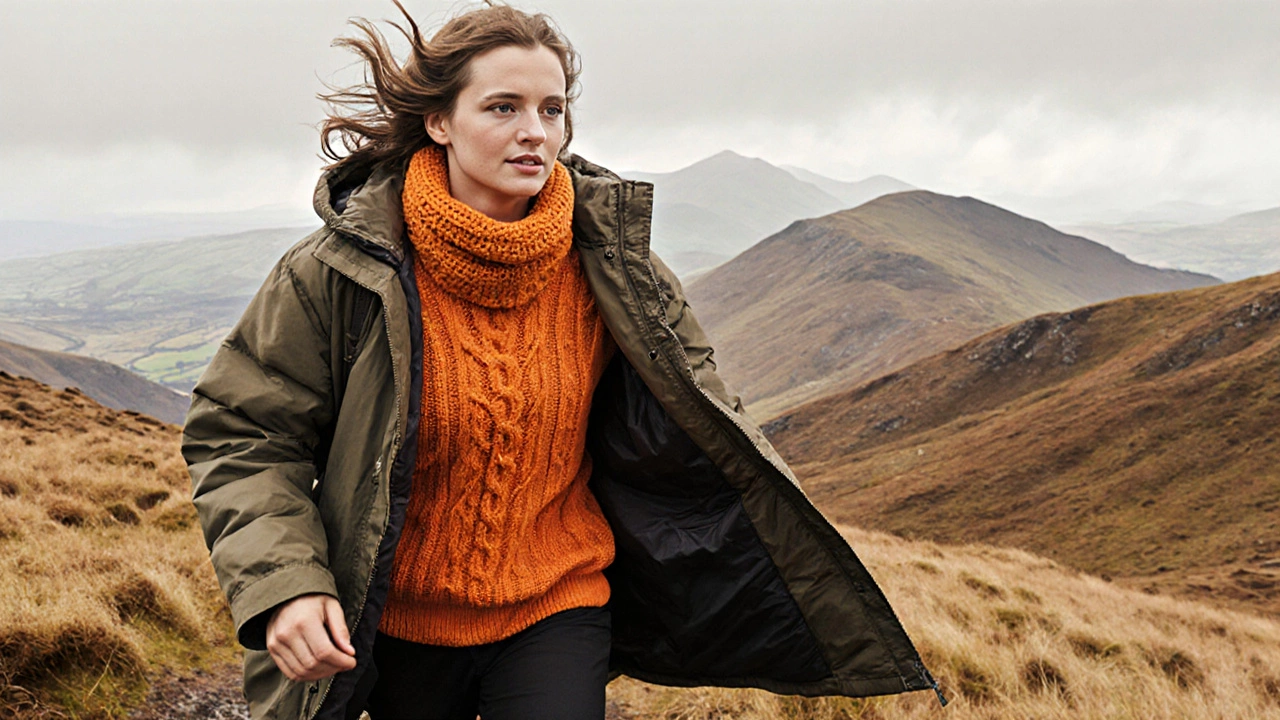
Pros and Cons at a Glance
| Aspect | Tight Fit | Loose Fit |
|---|---|---|
| Layering Freedom | Limited - may feel restrictive with thick layers. | High - easy to add sweaters, hoodies, or waterproof shells. |
| Mobility | Good for city walking, but can hinder arm movement. | Excellent for outdoor activities, hiking, and cycling. |
| Weather Performance | Close contact can trap heat; risk of condensation. | Better airflow; moisture can escape, reducing chill. | size="3"
| Style Profile | Sharp, urban, suitable for office or night out. | Relaxed, casual, ideal for weekend trips or festivals. |
| Cost | Often pricier due to tailored construction. | Range varies; bulkier designs may cost more for materials. |
Local Brands and Where to Shop
Irish retailers understand the need for both fit options. At Arnotts on Henry Street, you’ll find a mix of fitted trench coats from European designers and roomy parkas from outdoor specialists like Dubarry. For sustainable choices, check out the Irish Wool collection at Penney’s, which offers both sleek, body‑contouring wool coats and looser, heritage‑style overcoats.
How to Test Fit Before You Buy
- Wear the layers you plan to use - an Aran Sweater plus a light shirt is a typical Irish winter combo.
- Move your arms overhead and side‑to‑side; a good coat should not pull or gape.
- Check the shoulders - they should sit flat on the bone without extra fabric spilling over.
- Feel the weight; a tight coat that feels heavy may compress your layers, while a loose coat should feel balanced.
- Test the climate control - step into a windy area near the Liffey and see if the coat lets drafts in.
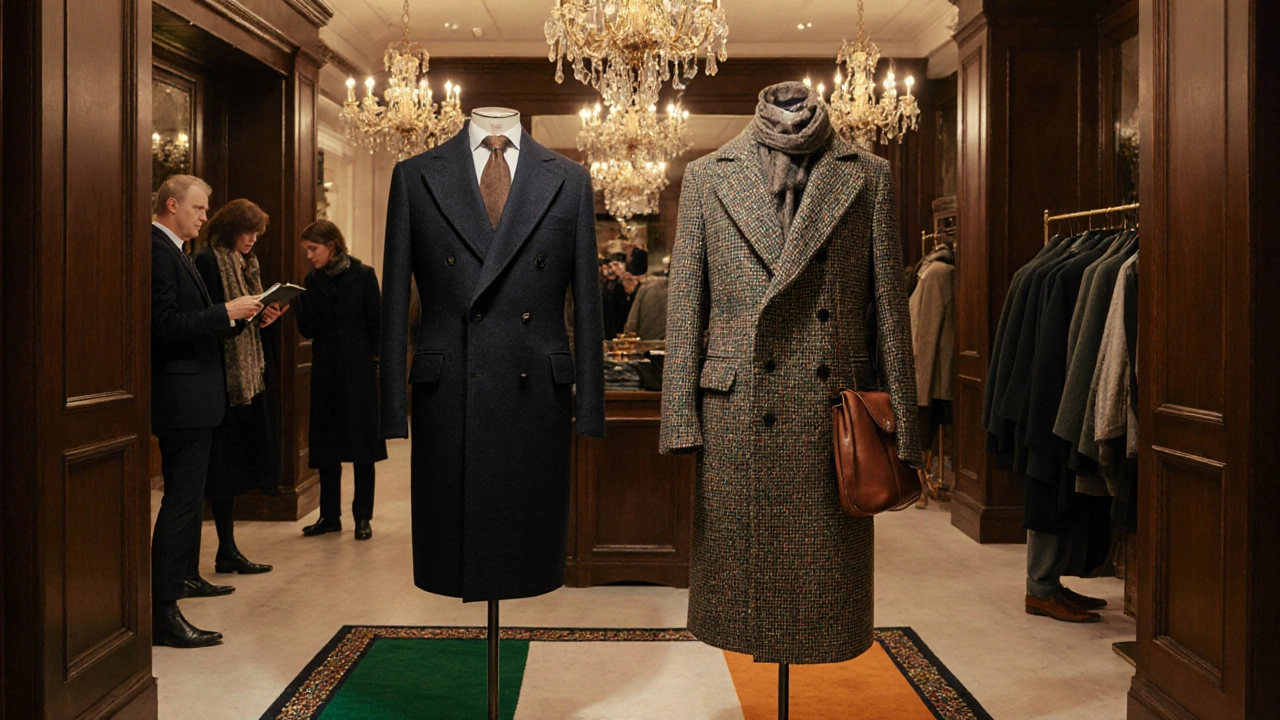
Maintenance Tips for Longevity
Irish rain can be harsh on fabrics. For waterproof coats, re‑apply a DWR (durable water repellent) spray every 6‑12 months. Wool coats benefit from a gentle dry‑clean, but you can refresh them at home with a light steam from your kettle - just avoid over‑wetting. Store any coat on a sturdy wooden hanger, especially the heavier loose parkas, to keep the shoulders from collapsing.
Key Takeaways
- Choose a tight coat for sleek city looks and when you’ll wear light layers.
- Opt for a loose coat if you need space for thick sweaters, outdoor gear, or plan active outings.
- Consider Irish weather patterns - wind and rain favor breathable, slightly looser fits.
- Shop locally at Arnotts, Brown Thomas, or Dubarry for options that suit the Irish market.
- Test fit with your typical winter layers and move around before committing.
Frequently Asked Questions
Do tight coats get colder in rainy weather?
A tight coat can trap moisture near your skin if it’s not made from breathable material. Look for coats with waterproof membranes like Gore‑Tex, or choose a slightly looser fit that allows air circulation.
Can I wear a loose coat over a suit for a business meeting?
Yes, if the coat has a structured silhouette and is tailored at the shoulders. Many Irish tailoring houses craft overcoats that sit loose over a suit but still look polished.
What Irish brands offer sustainable coat options?
Dubarry and the Irish Wool lines at Penney’s focus on locally sourced, biodegradable materials. Their coats often come in both fitted and relaxed cuts.
How should I care for a waterproof loose parka?
Re‑apply a DWR spray annually, wash on a gentle cycle with a technical cleaner, and dry on low heat. Store it hanging to keep the insulation even.
Is a tight coat suitable for hiking in the Wicklow Mountains?
Generally no - a looser, layered system works better for the variable altitude and wind conditions found on the Wicklow trails.
